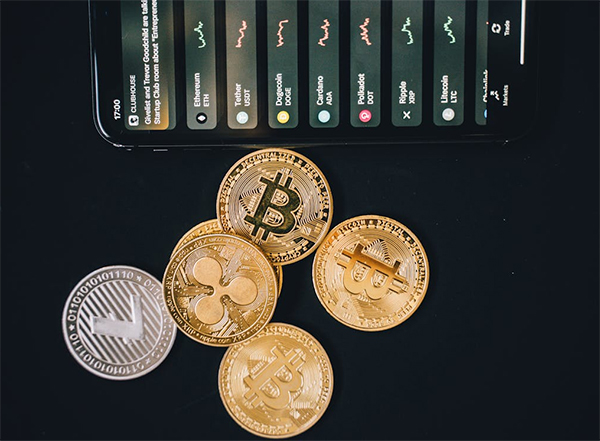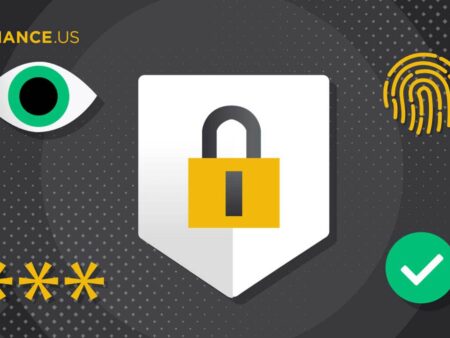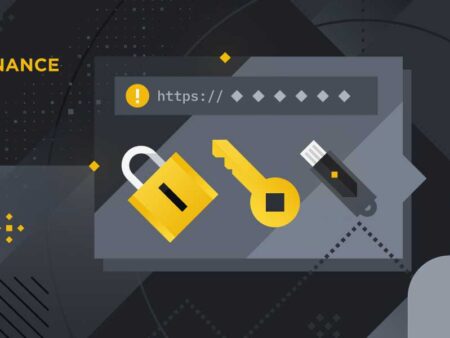Cryptocurrency has become a buzzword in recent years, capturing the attention of investors, technologists, and the general public. This digital asset, built on blockchain technology, offers a decentralized alternative to traditional currencies. However, with its rise in popularity comes a wave of questions regarding its safety and security. In this article, we will explore the fundamental aspects of cryptocurrency, its security features, associated risks, regulatory approaches, best practices for safeguarding assets, and future outlook regarding its safety.
Understanding the Basics: What Is Cryptocurrency?
Cryptocurrency is a type of digital or virtual currency that uses cryptography for security. It operates on a technology called blockchain—a decentralized ledger that records all transactions across a network of computers. This innovation ensures transparency and tamper-resistance, which are critical features that distinguish cryptocurrency from traditional financial systems.
One of the main characteristics of cryptocurrency is that it is decentralized. Unlike fiat currencies, which are regulated by governments and central banks, cryptocurrencies are typically maintained by a network of nodes (computers) that validate and record transactions. This decentralization reduces the risk of manipulation or control by a single entity.
Bitcoin, introduced in 2009, was the first cryptocurrency, and it remains the most well-known. Since then, thousands of alternative cryptocurrencies, or altcoins, have emerged, each with varying features and use cases. Examples include Ethereum, Ripple, and Litecoin, which offer functionalities beyond mere currency, such as smart contracts and faster transaction speeds.
Cryptocurrencies can be acquired through various means, including purchasing on exchanges, receiving as payment for goods and services, or mining—a process of validating transactions on the network. Investors view cryptocurrencies as a means of diversifying their portfolios, capitalizing on price volatility, or as a hedge against traditional market downturns.
The allure of cryptocurrency is not without its challenges. Critics often point to its volatility, lack of regulation, and potential for misuse. These factors have fueled debates on whether cryptocurrencies are safe investment vehicles. As the adoption of digital currencies continues to grow, understanding their underlying principles is vital for making informed investment decisions.
In summary, while cryptocurrencies promise innovation and opportunity, they also introduce complexities that require careful consideration. Understanding the basics of cryptocurrency sets the stage for evaluating its safety and security.
The Security Features of Cryptocurrency Explained
Cryptocurrencies incorporate several security features designed to protect transactions and users’ assets. One of the most significant is blockchain technology itself. Each transaction is recorded in a block, and once the block is filled, it is linked to the previous block. This chain of blocks creates a secure and tamper-proof transaction history that is nearly impossible to alter without consensus from the network.

Another crucial security feature is cryptography. Cryptocurrencies use cryptographic techniques to secure transactions and control the creation of new units. Public and private keys serve as the digital addresses for users, allowing them to send and receive funds securely. The private key, akin to a password, must be kept confidential to prevent unauthorized access to a user’s wallet.
Moreover, many cryptocurrencies have built-in consensus mechanisms—like Proof of Work (PoW) and Proof of Stake (PoS)—that help validate transactions and secure the network. In PoW, miners compete to solve complex mathematical problems, while in PoS, validators are chosen based on the number of coins they hold and are willing to “stake” as collateral. These mechanisms discourage fraud and ensure that malicious actors would require substantial resources to compromise the network.
Additionally, wallets—software or hardware that store cryptocurrency—often include security features such as two-factor authentication (2FA) and encryption. This added layer of security helps protect users against unauthorized access and hacking attempts.
Despite these robust security measures, it is essential to remember that no system is entirely immune to risk. The security of cryptocurrencies often depends as much on the user’s practices as on the technology itself. Thus, understanding how these features protect assets while recognizing their limitations is crucial for assessing the safety of cryptocurrency.
Overall, the security features of cryptocurrencies are advanced and designed to mitigate risks. However, users must remain vigilant and informed to safeguard their investments effectively.
Common Risks Associated with Cryptocurrency Investments
While there are numerous security features designed to protect cryptocurrency, several inherent risks come with investing in these digital assets. One of the most notable risks is market volatility. Cryptocurrencies are known for their price fluctuations, which can result in significant gains or losses within a short period. This volatility can be attributed to various factors, including market speculation, regulatory news, and technological developments.
Another risk is the threat of hacking and cybercrime. Despite the sophisticated security measures in place, cryptocurrency exchanges and wallets have been targeted by hackers. High-profile cases, such as the Mt. Gox hack in 2014, where approximately 850,000 Bitcoins were stolen, highlight the vulnerabilities in the ecosystem. Investors need to be aware that simply owning cryptocurrency does not guarantee safety from theft.
Additionally, regulatory uncertainty poses a risk to cryptocurrency markets. Governments across the globe are still figuring out how to regulate digital currencies, leading to an unpredictable legal landscape. Sudden regulatory changes can impact prices dramatically and may even lead to restrictions or bans on certain cryptocurrencies.
Moreover, scams and fraud in the cryptocurrency space are prevalent. Ponzi schemes, fake initial coin offerings (ICOs), and phishing attacks are common methods used by malicious actors to exploit unsuspecting investors. It is essential for investors to conduct thorough research and due diligence before engaging with new projects or platforms.
Also worth noting is the lack of investor protection. Unlike traditional banks or investment firms, cryptocurrency exchanges often do not offer protections such as insurance for deposits. This absence of safety nets can leave investors vulnerable to total loss in the event of exchange failures or hacks.
In summary, while cryptocurrency offers unique opportunities, it also comes with a variety of risks. Investors must carefully weigh these risks against potential rewards and develop a comprehensive understanding of the challenges they may face.
Risks Summary
| Risk Category | Description | Examples |
|---|---|---|
| Market Volatility | Rapid price changes can cause significant gains/losses | Bitcoin, Ethereum price swings |
| Hacking & Cybercrime | Vulnerability of exchanges and wallets to attacks | Mt. Gox hack, Binance breach |
| Regulatory Uncertainty | Changing laws can affect market dynamics | China’s crypto bans |
| Scams & Fraud | Deceptive schemes targeting investors | Ponzi schemes, fake ICOs |
| Lack of Protections | Limited safeguards for investors | No insurance on exchanges |
Regulatory Landscape: How Governments Approach Crypto Safety
The regulatory landscape for cryptocurrencies varies greatly from country to country, impacting the overall safety of these digital assets. Governments have adopted diverse approaches ranging from outright bans to comprehensive regulatory frameworks. Understanding these regulatory environments is crucial for gauging the safety of cryptocurrency investments.
In some countries, like Japan and Switzerland, cryptocurrencies are recognized as legal forms of payment, and regulatory authorities have established guidelines to protect consumers and investors. In Japan, for instance, cryptocurrency exchanges must register with the Financial Services Agency (FSA) and comply with strict anti-money laundering (AML) and know-your-customer (KYC) regulations, promoting a safer trading environment.
Conversely, countries like China have taken a harsher stance, banning cryptocurrency trading and Initial Coin Offerings (ICOs) altogether. Such regulatory decisions create uncertainty for investors and can lead to significant price drops in the global market. This divergence in regulatory approaches highlights the challenges investors face when navigating the cryptocurrency landscape.
The United States presents a mixed picture as well. Various states have implemented their own regulations, and the federal approach has been slower to evolve. The Securities and Exchange Commission (SEC) has been active in regulating ICOs and determining whether certain cryptocurrencies qualify as securities, which impacts their legality and how they are traded.
Globally, there is a growing acknowledgment of the need for coordinated international regulations to address the cross-border nature of cryptocurrency transactions. Organizations like the Financial Action Task Force (FATF) are working towards establishing guidelines to enhance cooperation among countries and provide a cohesive regulatory framework.
In summary, the regulatory landscape surrounding cryptocurrencies significantly influences their safety and investment viability. As regulations evolve, they may enhance protections for investors and contribute to greater confidence in the cryptocurrency market.
Best Practices for Safeguarding Your Crypto Assets
Safeguarding cryptocurrency investments requires adopting best practices to mitigate risks and enhance security. Here are several strategies investors can employ to protect their assets effectively:
- Use Hardware Wallets: Hardware wallets store cryptocurrency offline, making them less susceptible to hacking. They offer an added layer of protection compared to software wallets and are ideal for long-term storage.
- Enable Two-Factor Authentication (2FA): Many exchanges and wallets offer 2FA as an extra security measure. By requiring a second form of identification—such as a text message code—users can significantly reduce the risk of unauthorized access.
- Keep Software Up-to-Date: Regularly updating wallet software and apps can help patch vulnerabilities and enhance security features. Cybercriminals often exploit outdated software to gain access to assets.
- Conduct Due Diligence: Before investing in a cryptocurrency or trading platform, it’s essential to conduct thorough research. Verify the legitimacy of exchanges, read reviews, and understand the project behind the cryptocurrency.
- Be Wary of Phishing Scams: Cybercriminals often use deceptive emails or websites to trick users into providing their private keys or credentials. Always double-check URLs and avoid clicking on suspicious links.
- Diversify Your Investments: While cryptocurrency can be volatile, diversifying across different assets can reduce risk exposure. Consider spreading investments across various cryptocurrencies to minimize the impact of market fluctuations.
By implementing these best practices, investors can significantly enhance the security of their cryptocurrency holdings. However, it’s crucial to remain vigilant and continuously educate oneself about potential threats in the ever-evolving digital landscape.











I was surprised to learn about the lack of investor protections in cryptocurrency exchanges.
This article explained why cryptocurrencies can be risky but also offered useful tips on safeguarding assets.
Phishing scams sound scary! I’ll definitely be more cautious with links and emails now.
The explanation of market volatility and hacking risks was eye-opening. Need to be careful investing.
Good to know that different countries have different regulations for cryptocurrencies. It affects safety a lot!
I didn’t realize how important it is to use hardware wallets for storing crypto securely.
Interesting insights on regulatory landscapes. Japan seems like a safe place for crypto trading!
This article helped me understand the basics of cryptocurrency. I didn’t know it was decentralized!
Diversifying investments seems like a smart move given the volatile nature of cryptocurrencies.
I found the section on security features very informative. It’s amazing how blockchain technology works.